Decorticate Posture: Cause, Symptoms, Diagnosis, Treatment, Exercise
Table of Contents
What is Decorticate posture?
Decorticate posture is an abnormal posture in which a patient’s Body is in rigid-stiff with both arms flexed over the chest, while fingers clenched , wrist flexed, and both legs are in extended full-straight. The arms are bent in toward the body and the wrists and fingers are bent and held on the chest. This type of posturing is a sign of severe damage in the brain.
People who have this condition should require emergency medical treatment. It may occur on one or both sides of the body.
Decorticate posture definition:
It is an abnormal posture characterized by body is in rigid state with arms flexed, fingers clenched and wrist flexed positioned while lower extremities are extended occurs mainly due to brain related condition.
Decorticate posturing is a type of pathological state in which patient is anable to control body movement and its require immediate medical treatment. It is often an indication of certain types of severe Brain or spinal cord injury.
Other name of Decorticate posture are decorticate response, decorticate rigidity, flexor posturing, or, colloquially, mummy baby.
It is a sign of severe damage to the area of the midbrain, which is located between the brain and spinal cord. The midbrain controls motor movement. However Decerebrate symptoms is serious condition but as compared to decerebrate posture, it is less severe.
A neuro-muscular response to the trauma showing decorticate posturing in response to pain gets a score of three in the motor section of the Glasgow Coma Scale, mainly due to the flexion of muscles of upper body parts.
There are two parts to this posture:
It is the facilitation of the rubrospinal tract while at the same time disinhibition of the red nucleus. The rubrospinal tract stimulates motor neurons in the cervical spinal cord that are supplying the flexor muscles of the upper limb. The rubrospinal tract and medullary reticulospinal tract producing flexion type of posturing while the medial and lateral vestibulospinal and pontine reticulospinal tract responsible forthe extension posturing in the upper limb.
The second part of this posture is the disruption of the lateral corticospinal tract which stimulates motor neurons in the lower spinal cord supplying flexor muscles of the lower limb, while at the same time, the pontine reticulospinal and the medial and lateral vestibulospinal stimulates the extension movement of the lower limb greatly overcome the medullary reticulospinal tract.
Mainly these two tracts effects by lesions above the red nucleus leads to the specific flexion posture in the upper limb and extensor posture in the lower limb.
This abnormal posture shows that there may be severe damage to brain areas are the cerebral hemispheres, the internal capsule, and the thalamus. It may also sign of midbrain damage. This posture is usually indicative of more severe damage at the rubrospinal tract, and the red nucleus is also involved, indicating a lesion lower in the brainstem.
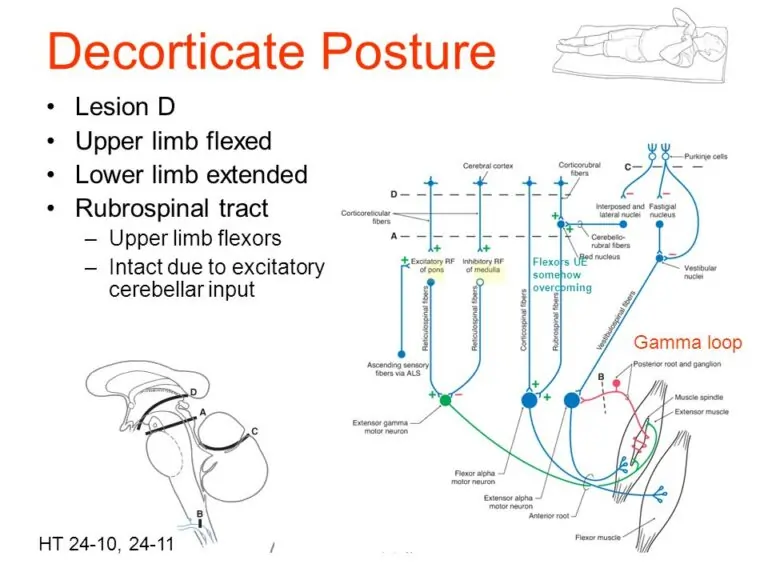
Causes of decorticate posture:
It may seen in various conditions, mainly are:
- Traumatic brain injury (TBI)
- Bleeding in the brain
- Certain types of Brain cancer mainly Brain tumor
- Stroke
- overdose of Drugs side effects that affects the Brain (poisoning, infection, or liver failure)
- Increased pressure in the brain
- Infection, such as Reye’s syndrome, malaria, or Meningitis, encephalitis.
- Brain injury from lack of oxygen
- Seizures
- Coma
When to contact a doctor in decorticate posture?
It is a serious medical condition in which emergency medical treatment is required, A person with this abnormal posture may be unconscious, mostly in a coma. In few cases, the doctor will admit in ICU (hospital’s intensive care unit) where breathing assistance and other medical treatment are started. In few cases emergency surgery is also required depends upon diagnosis and condition of the patient, However it is decided by doctors after examine the patient.
After Doctor’s Physical examination of the brain and nervous system, Doctor’s also required few test for proper diagnosis, These are:
- CT scan or MRI of the head
- EEG
- Cerebral angiography
- Lumbar puncture
Prognosis of Decorticate posture:
The prognosis depends on the cause, Diagnosis and severity of symptoms and also age and other related factors.
This abnormal posture could indicate severe brain damage of nervous system injury and sometimes permanent brain damage, which could result in:
- seizures
- paralysis
- inability to communicate
- coma
Treatment:
In this abnormal posturing requires emergency medical treatment. Treatment mainly depends upon cause, symptoms and also upon diagnosis. In severe cases patient are admited in intensive critical care unit (ICCU) where 24 hours supervised medical treatment are given. There may be emergency surgery also require depends opon Doctor’s recomendation.
Physiotherapy treatment:
Physiotherapy treatment depends upon symptoms and condition of the patient. Most common form of treatment is maintain Range of motion of all body joint movement, reduce spasticity if present, regular positioning if require, if patient is in coma stage, regular chest physiotherapy is also important.
If patient have Paralysis related symptoms , Rehabilitation depends upon symptoms and movement. Regular exercise helps patient to regain movement control and helps to improve balance. Gait training with assistive device such as walker or stick.
Risks of Decorticate Posturing
Decorticate posture is indicate serious brain damage. This damage can lead to death if you don’t get emergency medical treatment. If it is worsens may lead to decerebrate posturing. Decerebrate posture occurs when more severe brain damage done.


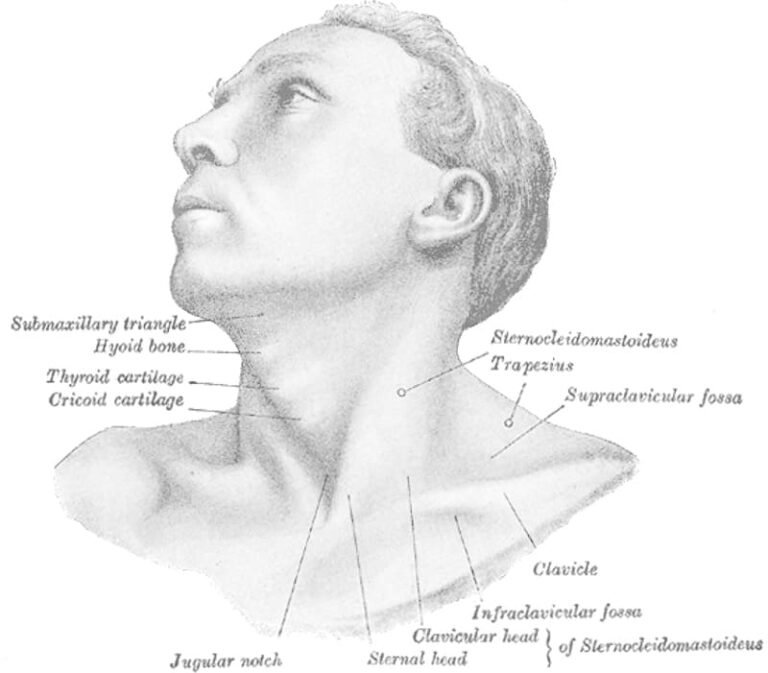

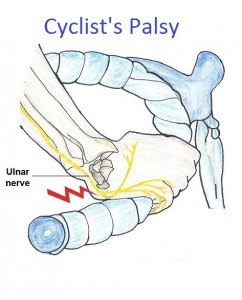
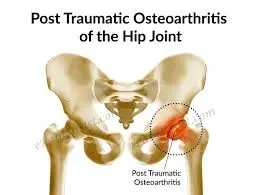
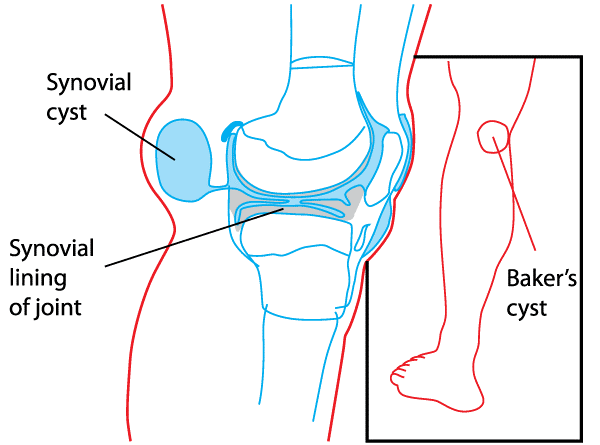
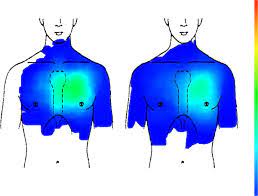
2 Comments